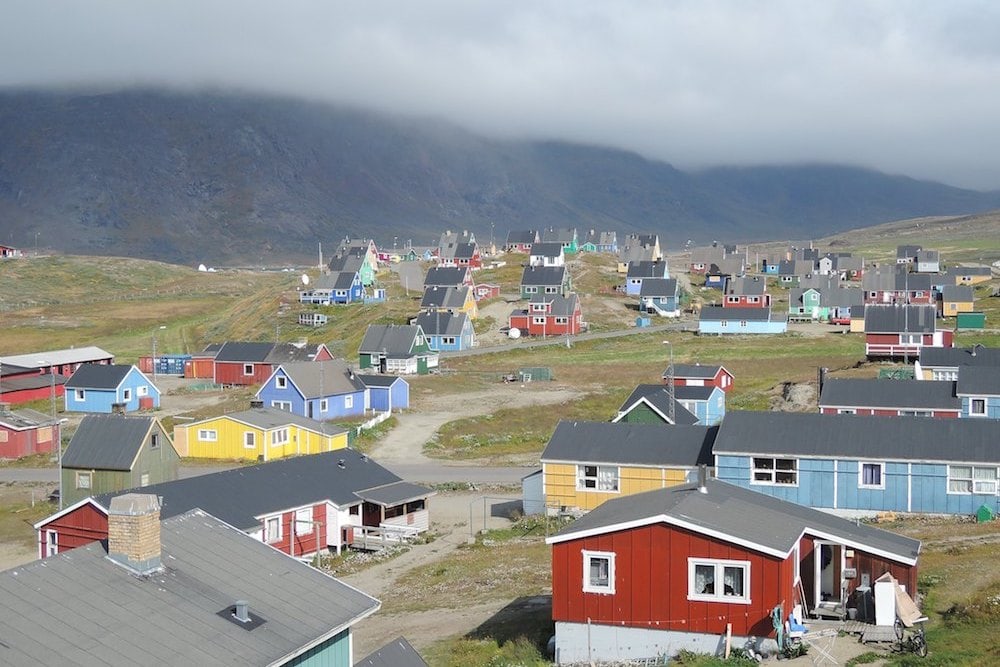
[Image above] The southern Greenland town of Narsaq, pictured above, is near the site of the controversial Kvanefjeld project, an Australian-led uranium and rare earth mining project. A recent election on April 6 gave a different party the chance to form a government, which may influence future decisions concerning this project. Credit: anmede, Flickr (CC BY-SA 2.0)
Over the past few years, much discussion has taken place over China’s growing role in world affairs. In particular, China’s dominance of the rare earths market has garnered a lot of attention.
Rare earth elements are a set of 17 metallic elements—the 15 lanthanides plus scandium and yttrium—that are essential components of many high-technology devices, including smart phones, computers, and renewable energy technologies. These elements are not “rare” due to limited natural quantities; rather, they occur around the Earth in low concentrations, which makes finding large deposits of them in one place a rare occurrence.
China is the world’s leading producer of rare earth elements, due largely to the country having the highest reserves of rare earth minerals in the world plus control over the whole rare earth supply chain. There are increasing concerns globally about China’s dominance in the market because of the potential for China to restrict export of these important materials, which would hamper other countries’ development of advanced technologies. As such, governments around the world are looking to expand mining operations and set up processing plants elsewhere, notably in Australia and the United States.
Greenland is another place that has received interest from mining companies because of its large, untapped deposits of rare earth minerals. Specifically, the Kvanefjeld project in the south of Greenland, which comprises three linked deposits owned by Australian company Greenland Minerals, is considered one of the world’s biggest undeveloped reserves of rare earth minerals.
For years the Greenland deposits kept a relatively low profile, but recent interest in developing new rare earth mining operations outside of China has raised Greenland’s international profile considerably—particularly in 2019 when then-U.S. President Donald Trump proposed wanting to buy Greenland from Denmark. (Greenland is a semiautonomous territory within the Kingdom of Denmark.)
Despite the international interest, Greenland itself is split on the prospect of developing its rare earth deposits. Since it became self-governing in 1979, Greenland is run by a unicameral parliament called “Inatsisartut” that is composed of 31 members who are elected for a 4-year period.
The current ruling social democratic Siumut party, which favors maintaining close relations with Denmark, supports expanded mining. As quoted in a Deutsche Welle article, Siumut party leader Erik Jensen says the Kvanefjeld project would be “hugely important for Greenland’s economy,” helping diversify revenues and achieve greater independence from Denmark.
In contrast, the Inuit Ataqatigiit party, which calls for full independence from Denmark, is concerned that mining may harm the island’s environment, which is already experiencing the effects of climate change. The party has a zero-tolerance policy for uranium mining, though it would support carefully regulated mining of rare earth minerals.
The Siumut party has led all governments since 1979, except for 2009–2013. However, the Siumut party may not lead for much longer, based on the results of a recent election.
On April 6, voters in Greenland gave the Inuit Ataqatigiit party its first-ever chance to form a government with 37% of the vote, compared to 29% for the Siumut party. “The vote totals should allow Inuit Ataqatigiit to grab 12 seats in the 31-member unicameral legislature … meaning it will likely need to form a coalition with support from one of the smaller parties,” an NPR article explains.
Support from Prime Minister Kim Kielsen and his governing Siumut party helped Greenland Minerals gain preliminary approval for the Kvanefjeld project last year, and the Australian firm already spent more than $100 million preparing the mine. However, Inuit Ataqatigiit’s leader Múte Bourup Egede told broadcaster DR that the project will be halted for now.
In a Reuters article, Mikaa Mered, lecturer on Arctic affairs at HEC business school in Paris, says while this development will hamper mining development in the near future, “Greenlanders are sending a strong message that for them it’s not worth sacrificing the environment to achieve independence and economic development.”
Learn more about the Greenland deposits and factors shaping the recent election in the video below.

Credit: TRT World Now, YouTube
Author
Lisa McDonald
CTT Categories
- Environment
- Market Insights


